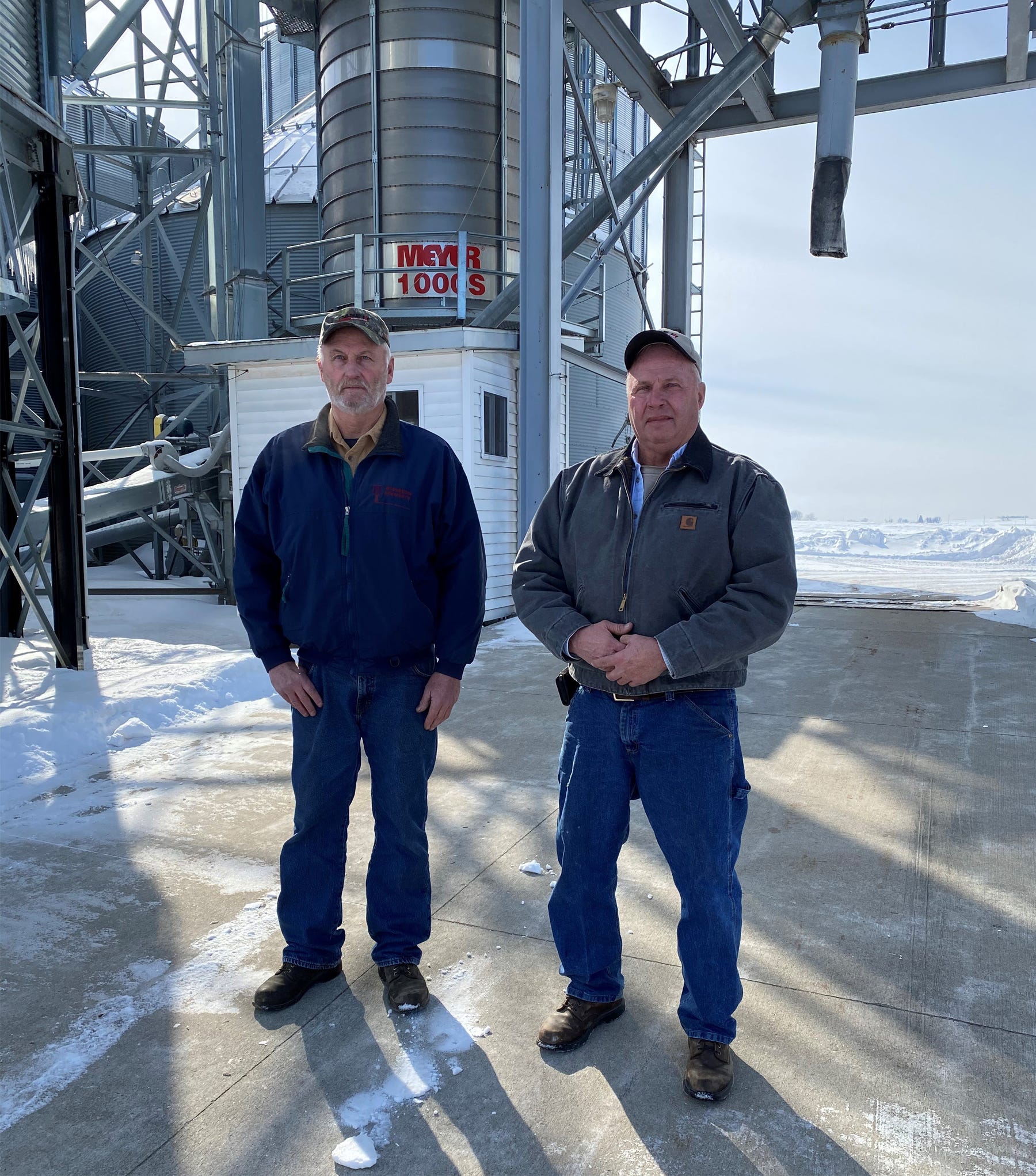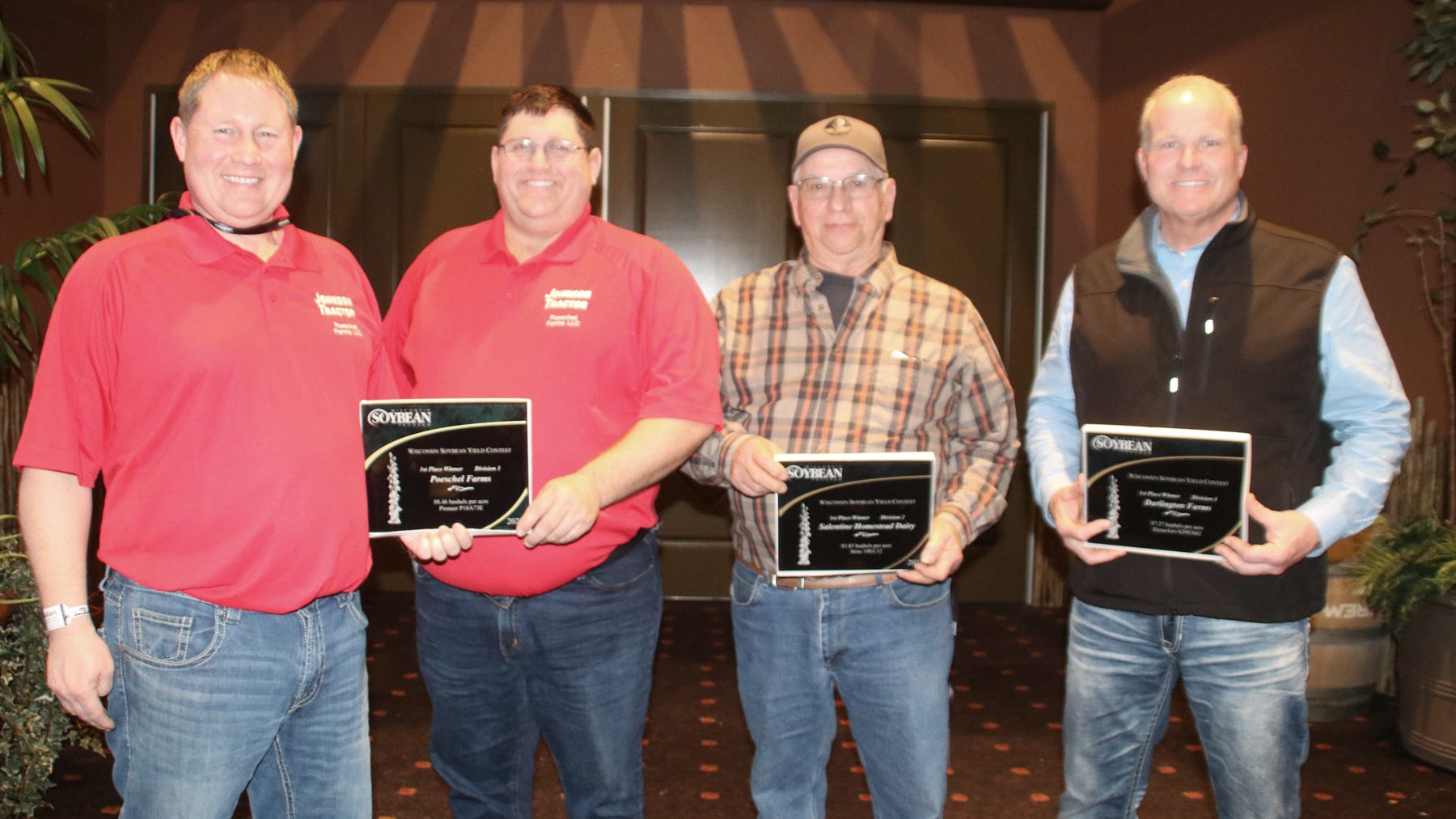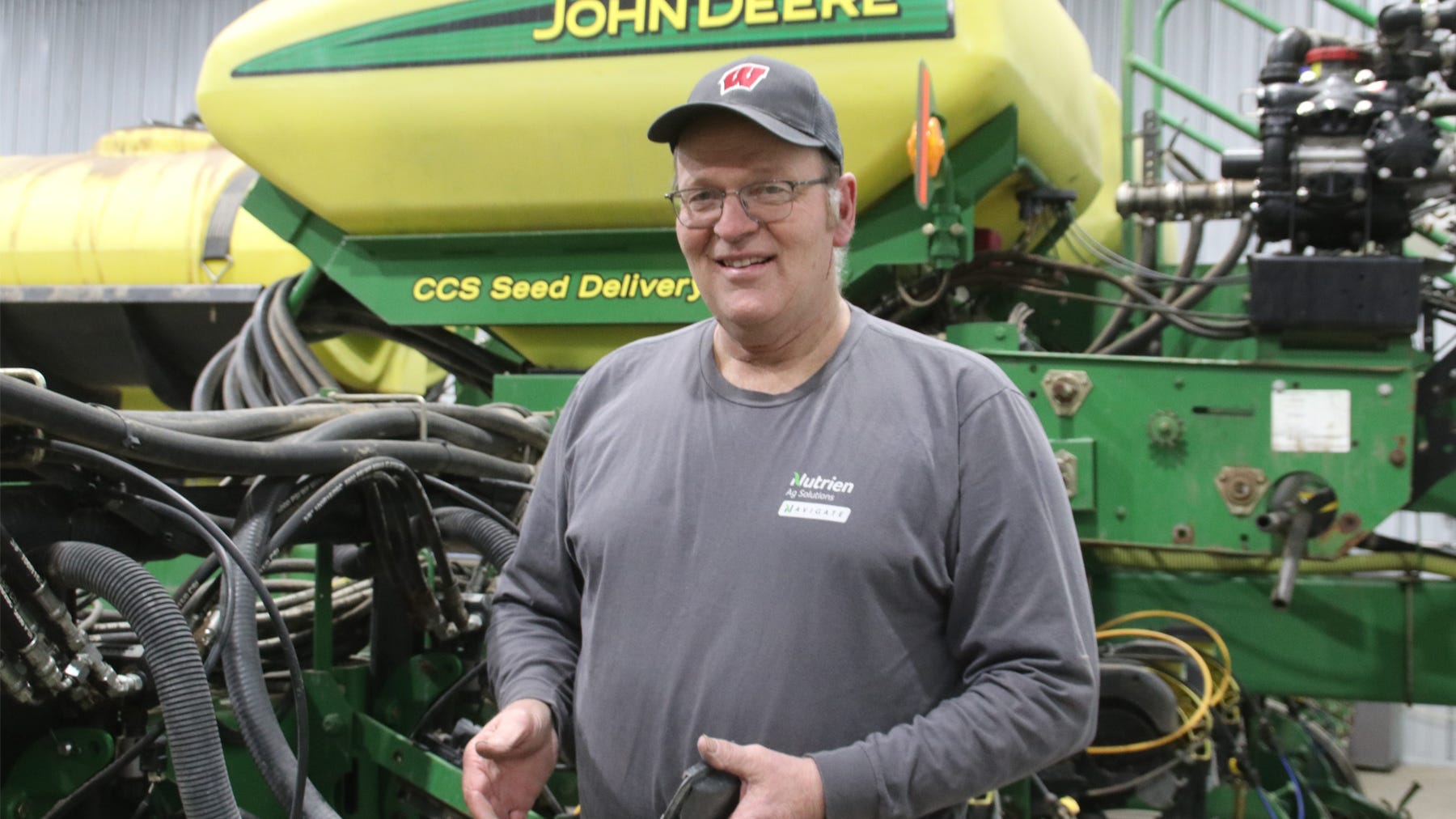March 26, 2024

Every year, more farmers ignore the calendar and start planting soybeans as soon as soil conditions allow in hopes that earlier planting will boost production. Beans planted from mid-April through early May have more time to harvest sunlight and increase photosynthesis, which results in higher yields. But that practice isn’t without risk.
Studies show waiting too long to plant also can cost yield. Research led by Shawn Conley, University of Wisconsin-Madison soybean specialist, indicates yields decrease by 0.2 to 0.5 bushel per acre per day when seed is planted after April 25. Soybeans planted in mid-April tend to yield 5 to 10 bushels per acre better than mid- to late-May planting, Conley says.
Farmers need to balance the yield advantage of planting early with the risks. However, seed companies have geared breeding programs to offer more variety options that better handle early-season environments, which can include major temperature swings and heavy rains.
“Picking high-yielding varieties that emerge and grow fast is best if planting early,” Conley says. “Cooler soils early in the planting season can delay emergence, so select the longest-season varieties for the climate and farm. Producers can gain yield by pushing maturity.
“Protect seed and seedlings. Agronomists recommend treatments to include fungicides that protect against early-season diseases such as pythium, phytophthora, rhizoctonia, fusarium root rot and sudden death syndrome.”
Conley points out that yields might have been down 10 to 20 bushels per acre in 2023, but a full water profile in most fields at planting time impacted overall production. And even though dry conditions came later, weed control was good and there was relatively low pressure from insects and disease.

PLANTING WINDOW: According to University of Wisconsin Extension soybean specialist Shawn Conley, yields decrease by 0.2 to 0.5 bushel per acre per day when seed is planted after April 25. Soybeans planted in mid-April tend to yield 5 to 10 bushels per acre better than mid- to late-May planting.
The Wisconsin Soybean Association Yield Contest is held each year to encourage the development of new, innovative management practices. Here are the 2023 winners from each of the four divisions, starting with the top yielder:
Ground rules
In 2020, brothers Doug and Don Midthun of Arlington became the first soybean producers in Wisconsin to top the century mark with 105.18 bushels per acre. In 2022, their contest field averaged 96.57 bushels per acre, the highest yield in the state. Last fall, they again produced the highest yield in the state and topped the century mark for a second time with 107.45 bushels per acre. The Midthuns are the Division 3 winners.
The brothers raise corn, soybeans and wheat on 1,285 acres in parts of Dane and Columbia counties. The contest field of 34.1 acres, which has been in continuous corn for 20 years, features a Kegonsa silt loam soil. Each growing season, they base their fertility program on variable-rate mapping and three-year soil test results.
In fall 2022, the Midthuns applied 250 pounds of potash, 100 pounds of DAP (18-46-0), 15 pounds of elemental sulfur and 10 pounds of Crop Mix LS — a blend of five micronutrients consisting of 8% zinc, 7% sulfur, 3% manganese, 1% boron and 1% copper.
Using a 16-row Case IH 1255 planter, 125,000 seeds per acre of Asgrow AG24XF1 were planted in 30-inch rows on May 6. At harvest Oct. 7, the moisture test was 11.7% with a final stand of 110,000 plants per acre.
Dry conditions in June and July may have reduced yields. However, rain in late August and early September increased the overall size of beans. The area received a total of 14 inches of moisture during the growing season.
Their preemergence herbicide treatment was 6 ounces of Authority First and 1 pint of Dual Magnum per acre, while the postemergence application included 24 ounces of Credit Xtreme, 5 ounces of Outlook and 6 ounces of Clethodim 2E per acre — along with 17 pounds of AMS and 18 pounds of Hook per 100 gallons of water per acre. In most years, waterhemp is the biggest weed problem.
The base seed treatment package consisted of Primo for the inoculant and Warden CX for broad-spectrum disease and insect protection. An addition of Saltro to protect against soybean cyst nematode and sudden death syndrome was applied on the field, along with 0.8 ounce of RightStart to control white mold.

CENTURY MARK: Doug and Don Midthun, Arlington, Wis., have topped 100 bushels twice with their soybean yields, in 2020 with 105.18 bushels and in 2023 with 107.45 bushels. They won Division 3 of the 2023 Wisconsin Soybean Association Yield Contest.
“Planting as early as possible in 30-inch rows and maintaining fertility with a specific focus on potassium, sulfur and micronutrients were the primary management components that contributed to higher-than-average yields,” says Pete Clothier, master agronomist for United Cooperative in Prairie du Sac, Wis. “Another key is the planting rate of 125,000 seeds per acre. This seems to be the right population and sweet spot to achieve the best canopy for white mold control and mitigate waterhemp pressure.
“For soybean producers in this area, the bottom line is all about return on investment, and each production step has to carry its own weight,” he adds.
Yield boosters
Darlington Farms outpaced the competition in Division 4 with 97.27 bushels per acre. That was the second-highest total for the state and 30 to 35 bushels over the farm’s average bean yield the past five years.
This enterprise was established in the 1970s by Homer Evanstad, who is still active at age 96. Day-to-day operations are run by brothers Tom and Kirk Evanstad, along with Tom’s two sons, Taylor and Tanner. The family operates around 2,000 acres of corn, soybeans, hay and pasture in Lafayette County, Wis. Conservation practices include buffers, contour strips and minimum tillage. The 2023 crop year was dry with only 13 inches of moisture, 7 inches below average.
The farm includes several fields in lower elevations that are typically continuous corn due to the wet conditions that can occur, especially in the spring. However, drier areas the past few years have been favorable for a soybean rotation on the primarily Tama silt loam soils, which includes the 43-acres selected for the contest. Variable-rate fertility recommendations are designed to replace nutrients removed at harvest and maintain a potassium level of 150 parts per million and phosphorus at 30 ppm. They use grid soil sampling with one bore taken on every acre.
At planting, an in-furrow application of Black Label Zn, Radiate and Accomplish Max was made to help with root development and nutrient availability. Seed was treated with CruiserMaxx Vibrance, Saltro and Dyna-Start inoculant to protect against insects and fungal diseases and to improve germination.
Seeds were dropped, along with liquid fertilizer, into 15-inch rows at 130,000 plants per acre with a Kinze 3600 31-row planter on May 2. Beans were harvested Oct. 6 at 13% moisture with a final stand of 105,000 plants per acre.
“There was a plan in place to optimize yield not only in the seed variety to be selected, but also the fertility and crop management to be used,” Tom Evanstad says. “Andrew Tucker, agronomist at Nutrien Ag Solutions in Mineral Point, formulated a program designed to deliver an additional 30-bushel yield over the farm average.
“Everything started with a fall application of calcium nitrate and AMS fertilizer to help with soil drainage and residue decomposition from the previous corn crop. The goal was to minimize compaction in the spring, with only wheeled passes across the field during planting and preemerge herbicide application with the sprayer.”
The herbicide program consisted of 2 quarts of Tendovo per acre, followed by 1 quart of Liberty per acre at V3 to clean up a few escapes. Foliar applications of Radiate Next, Terramar and ReaX Complete were applied with an Agras T40 drone on a biweekly interval starting at the end of May with first trifoliate. The field also received applications of Miravis Neo fungicide at R3 and R5 growth stages.
“Our breakeven on the extra management package was about 10 bushels per acre,” Kirk Evanstad adds. “By strategically placing the higher management applications where there was expected higher yield potential, a positive return on investment was met.”

HIGH YIELDERS: Winners of the 2023 Wisconsin Soybean Association Yield Contest include (from left) Todd and T.J. Poeschel, Durand, Wis., Division 1; Jim Salentine, Luxemburg, Wis., Division 2; and Tom (pictured) and Kirk Evanstad, Darlington, Wis., Division 4.
Technology pays dividends
Poeschel Farms LLC from Durand, Wis., was the top grower in Division 1 with 88.46 bushels per acre. The 1,300-acre Buffalo County enterprise, which also features hilly terrain in Pepin, Dunn and Eau Claire counties, includes Todd and Michelle Poeschel and T.J. and Sarah Poeschel. In addition to full-time jobs, brothers Todd and T.J. produce 25 head of beef cow-calves and maple syrup.
Besides 350 acres of soybeans, they grow corn and alfalfa and prefer no-till for raising crops. Over the past five years, the Poeschels’ soybeans have averaged 57 bushels per acre. The 3-acre contest plot consisted of heavy ground with some clay soil in a two-year corn rotation followed by beans. Their fertility package was 200 pounds of potash applied in the fall.
On May 5, they planted 150,000 seeds per acre of Pioneer P18A73E with a John Deere no-till drill. Beans were harvested Oct 9. at 13.2% moisture with a final stand of 140,000 seeds per acre.
To target giant ragweed, waterhemp, lambsquarter and emerged grasses, the first pass with a tank-mix of Thunder Master, Brawl, Roundup, Elite conditioner and Cover for drift control was made May 25. For any late-emerging weeds, they applied Enlist and Roundup July 5.
Their fungicide-foliar micronutrient application July 25 included Provant Pulse micronutrient and MasterLock.
“For the past six years, we have been planting beans early when the weather window opens. By following that timetable, there has been an exceptional yield advantage,” Todd says. “Another positive step is going with no-till on the hilly terrain and utilizing the latest factory equipment setups on the drill.”
Their Pioneer dealer, Justin Bauer with Bauer’s Seeds and Service in Durand, makes multiple scouting passes throughout the growing season. Keeping a close eye on weed infestations is critical, along with a three-year rotation for soil sampling and variable-rate spreading of fertilizer.
“The most critical factor for our soybean program is maintaining consistency. This involves keeping abreast on up-to-date technology with seed and chemical representatives, and taking care of the planting equipment,” T.J. says. “We are very competitive and decided to enter the soybean yield contest. Our goal is to maintain a profitable bottom line. That scenario would not be possible without the support from family members and local businesses we work with.”
Proven record
Salentine Homestead Dairy LLC claimed first prize in Division 2 with a yield of 81.85 bushels per acre. The winning total was slightly lower than the farm’s average of 83 bushels per acre over the past five years.
Jim Salentine has entered the contest nine times, garnering three seconds and now four top finishes. He farms 530 acres with his son Josh and three grandsons near Luxemburg, Wis. They practice a rotation of alfalfa, corn, soybeans and wheat, and normally use conventional tillage on their Hortonville soils, which are deep and well drained.
The Kewaunee County farmer planted the 15-acre contest plot with Stine variety 19EB23 LibertyLink soybeans using a six-row John Deere unit outfitted with row cleaners. He dropped 140,000 seeds per acre in 30-inch rows. The moisture content at harvest Oct. 14 averaged 16%, with a final stand of 130,000 plants per acre.
“I planted on May 10 in quite dry conditions and dropped seeds 2 inches deep, versus the normal depth of 1.5 inches,” Salentine recalls. “Overall, that decision paid dividends because the plot received no rain from May 1 to July 1.”
The seed was inoculated, and two fungicide and one insecticide application were during the growing season. That package was Bio-Forge and QuickRoots pre-inoculate. Foliar feeding was done at the R3 to R4 growth stage with a Hardi sprayer and 60-foot boom. This application included 2 ounces of Baythroid XL, 8 ounces of Stoller Grow, 2 ounces of Stimulate and 1 pint of Sugar Mover per acre.
“Timely rains in mid-July and late August totaling 6 inches, combined with those two passes of foliar feeding at flowering, helped boost the overall pod count plus adding more beans in 25% of the plants. Timely scouting from Mike Headt of Bio-Mass in Green Bay also paid dividends,” Salentine says. “That late-season moisture, average to above-average temperatures and a consistent number of sunny days were the primary factors for getting good yields.
“I tried everything to reach the century mark on the beans, but I’m extremely pleased with 81-plus bushels per acre.”

FIRST-TIME WINNER: Using strip tillage plus planting early helped Dan Kamps of Darlington, Wis., record 92.86 bushels per acre in his first year entering the Wisconsin Soybean Association Yield Contest.
1st-time entrant tops 90 bushels
Looking for a challenge, Dan Kamps, Darlington, Wis., was the top finisher in the new contestant category for 2023 with a yield of 92.86 bushels per acre.
Kamps and his wife, Ruth, operate Kamps Alfalfa Farms, which totals 1,031 acres. Along with corn, alfalfa and custom-chopping corn for silage, the couple also had 30 acres of soybeans last fall, their first year ever growing that crop.
The contest plot of 1.5 acres, with a pH rating of 6.7, featured a Tama silt loam soil that had been in continuous corn for 30 years. Twenty-five Angus stock cows normally graze that ground in late fall and winter.
Kamps fertility package at planting included 1 gallon of Black Label Zn, 2 ounces of Radiate and 1 quart of Accomplish Max per acre. Seed-applied inoculants were Dyna-Start 3P and Ilevo. Foliar feeding included 2 ounces of Radiate Next and 1 quart of ReaX Complete. Fungicide treatments were Priaxor at the R2 leaf stage and Revytek at the R4 leaf stage.
Xitavo 2632 soybeans, a Group III maturity, were planted in 20-inch rows at 130,000 seeds per acre with a John Deere 1770 NT planter on May 2. Beans were harvested Oct. 2 at 13.4%, with a final stand of 110,000 plants per acre.
“With only half the normal rainfall during the growing season, I was surprised with the yield,” Kamps says. “However, the dry conditions helped curtail disease infestations. Looking at the entire production program, success came using strip tillage across the farm, plus planting as early as possible, which helped the flowering timetable for beans.
“Since this was virgin ground with a south slope that featured good sunlight, I decided to enter the contest. If weather cooperates, I will plant 140 acres of soybeans before corn and lower the population to 110,000 plants per acre. And with a little more moisture, maybe 100 bushels of beans per acre will rattle out of the combine.”
Persinger lives in Milwaukee.
Read more about:
YieldsAbout the Author(s)
You May Also Like




